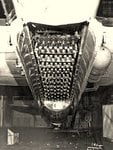Zniperguy114
Airman
Here are two famous WWII SMGs. Which do you think is better?
Here are some Stats:
PPSh-41 Thompson M1928A1
Calibre: 7.62mm M1930 .45 ACP M1911
Rate of Fire: 900 rpm 700 rpm
Weight: 8 lb 10.75 lb
Lenght: 33 inches 33.75 inches
Vote for the one you like best and have fun!
Here are some Stats:
PPSh-41 Thompson M1928A1
Calibre: 7.62mm M1930 .45 ACP M1911
Rate of Fire: 900 rpm 700 rpm
Weight: 8 lb 10.75 lb
Lenght: 33 inches 33.75 inches
Vote for the one you like best and have fun!

